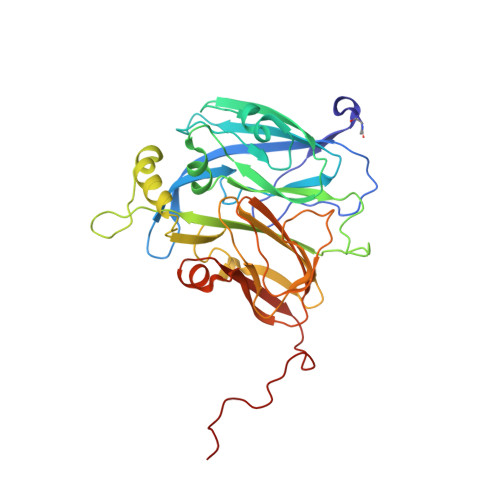High Resolution Structural Studies of Mutants Provide Insights Into Catalysis and Electron Transfer Processes in Copper Nitrite Reductase
Hough, M.A., Ellis, M.J., Antonyuk, S., Strange, R.W., Sawers, G., Eady, R.R., Hasnain, S.S.(2005) J Mol Biol 350: 300
- PubMed: 15927201
- DOI: https://doi.org/10.1016/j.jmb.2005.04.006
- Primary Citation of Related Structures:
2BO0, 2BP0, 2BP8 - PubMed Abstract:
We present high-resolution crystal structures and functional analysis of T1Cu centre mutants of nitrite reductase that perturb the redox potential and the Cys130-His129 "hard-wired" bridge through which electron transfer to the catalytic T2Cu centre occurs. These data provide insight into how activity can be altered through mutational manipulation of the electron delivery centre (T1Cu). The alteration of Cys to Ala results in loss of T1Cu and enzyme inactivation with azurin as electron donor despite the mutant enzyme retaining full nitrite-binding capacity. These data establish unequivocally that no direct transfer of electrons occurs from azurin to the catalytic type 2 Cu centre. The mutation of the axial ligand Met144 to Leu increases both the redox potential and catalytic activity, establishing that the rate-determining step of catalysis is the intermolecular electron transfer from azurin to nitrite reductase.
Organizational Affiliation:
Molecular Biophysics Group, CCLRC Daresbury Laboratory, Warrington WA4 4AD, UK.

















